
The younger generation is much more than adults, is susceptible to ARVI due to unstable immunity, increased physical activity, imperfect heat exchange and a large number of close contacts at playgrounds, preschools and entertainment centers. This attack does not bypass the infants - in this case, one of the main reasons are the physiological features of the structure of the respiratory system in children. In this article, we will discuss how to get rid of a constant companion of cold - thick, viscous snot.
What to do when the color of the snot is brown, you can learn from this article.
Contents
- 1 Why they appeared
- 2 Color of precipitations
- 3 Treatment of
- 4 Opinion of Komarovsky
Why they appeared

The main reason for the appearance of a thick mucus in the nose is a high content of mucin protein responsible for the structure of nasal secretions. This condition is a protective reaction of the child's organism to the penetration of a viral infection into it.
The mucus tightly clogs the nasal passages and thereby "preserves" the pathogenic microorganisms, preventing them from spreading further.But the phenomenon has the opposite, negative side - shortness of breath, provoking a slight oxygen starvation and many other unpleasant symptoms:
- restless sleep;
- loss of appetite;
- whims;
- complaints of a headache.
Increased production of mucin is triggered by factors such as hypothermia and allergic reactions to various food and respiratory irritants, so their appearance is mainly seasonal, exacerbating in spring and autumn.
Than to treat thick snot in a child, you can learn from this article.
The video tells how to treat thick snot in a child:
The color of the
discharge One of the diagnostic factors by which the pediatrician concludes that the causes of the runny nose is the color of the snot.
White or translucent thick snot appear at the very beginning of the viral disease or at the stage of recovery. They can have the appearance of viscous mucus, which it is extremely difficult for a child to blow his own nose, and can foam. 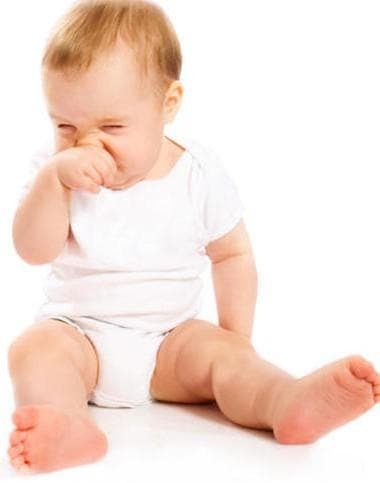
In addition to infection or inflammation of the respiratory tract, white discharge often indicates that the patient walks a little and moves, spending too much time at home breathing dusty, dusty air. If a child has such discharge from the nose - this is the first signal to parents about the need to revise his regime.
What to do when a baby snot has no temperature, you can find out by reading this article.
Green thick snot - is an indication that the baby's body is prone to a neglected disease, most likely related to the respiratory system .It can be sinusitis, chronic rhinitis, bronchitis and even lethargic pneumonia. The green color of mucus gives an excess of a special substance secreted by the immune system, so the appearance of such secretions indicates that the organism actively counteracts the spread of the virus. 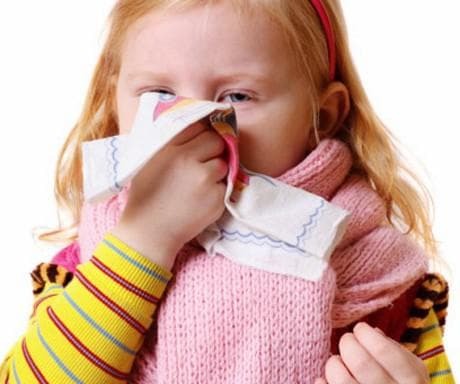
Yellow or brownish snot rarely appears in children, as this discoloration color evokes the gradually accumulating nicotine in the body, which is characteristic of smokers with the experience of .
Children have nasal congestion and thick snot, what to do and how to deal with it.you can learn from this article.
The mechanism is very simple - getting into the person's airways, nicotine settles on their walls and subsequently leaves during the runny nose, coloring the snot in a yellow-brown color. But if the parents still discovered a yellow slime from their child, this should serve as an occasion for an immediate visit to the doctor and a meticulous examination, as this can be one of the symptoms of serious diseases right up to the oncological ones. 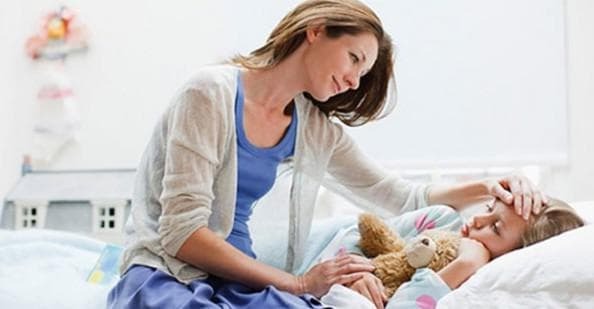
Thick snot with an admixture of blood does not always talk about serious diseases of .Most often, this is only a consequence of constant strains of bouts,( a consequence of the fact that they do not flaunt) leading to mechanical damage to blood vessels.
Than to treat, when the child has yellow snot, you can learn from this article.
However, it is not worthwhile to make a diagnosis - in rare cases, the bloody component in mucus is a manifestation of maxillary sinus or hypertension, so its frequent appearance should be an occasion for visiting the pediatrician. 
You can not lose sight of the smell of excreta - if it feels rotting in it, then this may indicate an acute stage of inflammation of the maxillary sinuses or frontal sinuses. Do not engage in self-medication - this disease almost always requires the use of antibiotic therapy and its flow should be monitored by an otolaryngologist.
How to treat snot like water, is indicated in the description for this article.
Treatment of
How to save a child from annoying discharge from the nose? At the heart of any treatment should be the correct diagnosis of the causes of the disease, without which it is impossible to select the necessary set of drugs.
An important role is played by home procedures aimed at liquefaction of mucus:
- of nose wash with a weak saline solution or special sprays that can be purchased at any pharmacy - Saline, Aqua Maris, Marimer, Delufen;
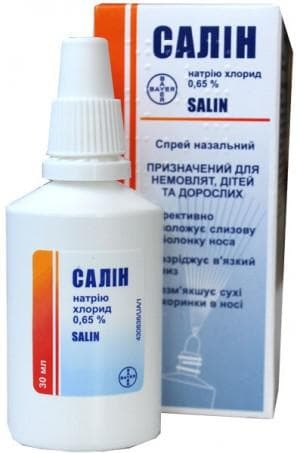
- instillation of nasal passages with drops of , prescribed by a doctor. Depending on the etiology of the indisposition and the age of the patient, they can be hormonal( Avamis, Nazonex, Polidex), vasoconstrictive( Pinosol, Physiomer, Nazivin, Otirivin, Tizin, Sanorin) or homeopathic( Euphorbium Compositum);
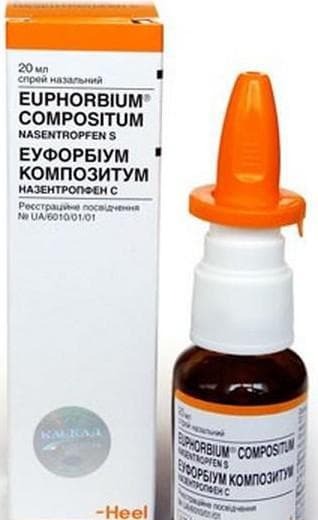
- physical procedures : electrophoresis, quartz, UFO.At home, they can be very effectively supplemented with folk methods of treatment - heating the nose with a chicken egg, a blue lamp, hovering legs in hot water( the latter method of treatment is only permissible for older children and, of course, under strict control of the water temperature by the parents);
- inhalation nebulizer.
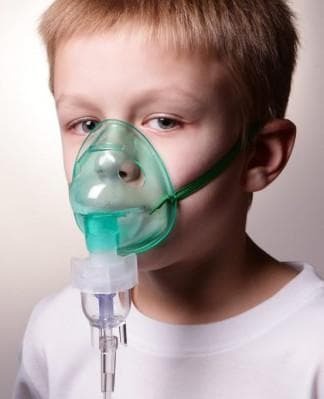
An important role in the treatment of thick snot and relief of nasal breathing of the child is played by hygiene and observance of the humidity regime in his room. It is necessary to conduct daily wet cleaning - to wash the floors, to wipe the dust, as often as possible to wash the soft elements of the interior - curtains, blankets, pillows, plush toys. To facilitate the sleep sick patient will help the evening airing of the room.
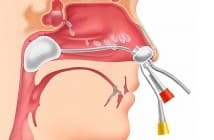 How is the treatment of maxillary sinusitis, you can learn from this article.
How is the treatment of maxillary sinusitis, you can learn from this article.
How to do a massage with genyantritis, you can see in the video in this article.
How to use thuya oil for a runny nose, you can read in the reviews in this article here: http: //prolor.ru/n/ lechenie-n / maslo-tui-pri-nasmorke-u-detej-instrukciya.html
If the cause of viscous secretions has become an allergic reaction of the body,protect the child from the influence of irritants, which creeps the apartment - feather pillows and blankets, domestic animals( we must not forget that the cause of the allergy may be not the pet itself, but its food or filler for the toilet), houseplants. Often the cause of snot can be contained in household chemicals - in this case it will have to be replaced by more organic products. It is also necessary to follow the doctor's recommendations regarding the diet and, if necessary, adjust it.
Depending on the cause of the onset of the common cold, the pediatrician may prescribe antihistamines, antiviral or antibacterial drugs to the child, which should be taken exactly according to his instructions. 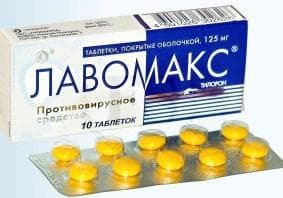
The smallest patients who are unable to bleat themselves on their own, should clean the nasal passages two or three times a day with a respirator - a special rubber pear with a plastic tip that helps to extract the snot under the influence of a vacuum.
Opinion of Komarovsky
Simple, useful and practical advice of the pediatrician Evgeniya Komarovskiy has often made life easier for parents and children and helped to bring the recovery closer. The reason for the appearance of dense excretions doctor calls the effect of allergens or the active activity of viruses and bacteria. In this case, green thick snot is an unequivocal and irrefutable sign of a bacterial infection. However, this does not mean that the child must be treated with antibiotics: the bacterial rhinitis is quite successfully treated by rinsings and warming up the nose. To make sure that the treatment is moving in the right direction, you need to monitor the color and degree of viscosity of the snot. If they gradually become lighter, become white and begin to leak, this indicates that the body is defeating pathogenic microorganisms.
On video - what to treat thick snot tells Komarovsky:
Special attention should be paid to walks: the doctor emphasizes that a child with any runny nose should breathe as much as possible clean and moist air. However, walks are permissible only when the child's body temperature does not exceed 36.6 ºС, and on the street - not below 0 ºС.To prevent the spread of infection, during the treatment should avoid children's groups and try to walk more in parks and other green areas, away from the congestion of people.
